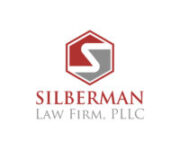
Our law firm receives a multitude of calls about fence issues in subdivisions and urban areas. This post will answer a handful of very basic questions and then discuss the more complicated issues of extended encroachment in the context of adverse possession.
First, the following are some basics about fences in Texas: If a fence is on your property, then you generally own that fence and are responsible for maintenance of the fence. As such, your neighbors are responsible for the fences on their property. A fence that sits on a boundary line is generally owned by both neighbors, and provided that both neighbors are using the fence, both neighbors would be responsible for repair and maintenance. A boundary line fence generally cannot be unilaterally removed by a neighbor.
Now that the simple questions are addressed, let us delve into the much more complicated area of long periods of fence encroachment on adjacent properties. A very common situation in residential neighborhoods occurs when a fence has been built that slightly (usually a matter of inches or no more than a couple feet) encroaches upon an adjacent property. Usually, the issue is discovered during the process of a potential sale when a new lender has required a survey. The owner of the neighboring property that is the victim of the encroachment will typically seek to remove the fence and a erect a new fence in the appropriate place. However, the neighbor that has benefited from the encroachment for a period of time typically responds with a claim of ownership to that tiny strip of land based on the doctrine of adverse possession.
The question we must answer is can one gain ownership to a small (inches or a couple of feet) strip of land based on the fencing of that small strip of land. To answer this question, we must first lay a basic foundation of adverse possession law in Texas.
"Adverse possession" means an actual visible appropriation of real property, commenced and continued under a claim of right that is inconsistent with and is hostile to the claim of another person.
TEX. CIV. PRAC. & REM. CODE ANN. §16.021
Aside from the above requirement in the statute, there are various periods of time with other required elements according to each limitations period; however, a discussion of each of those periods is not necessary for the purpose of answering the question at bar (Essentially, we assume that any required period of time has been met for our analysis).
We must focus on the fact that "Adverse possession" means an actual visible appropriation of the real property, commenced and continued under a claim of right that is inconsistent with and is hostile to the claim of another person. Id. § 16.021(1) (emphasis added).
In fact, the 14th Court of Appeals in McAllister v. Samuels, considered a case where a fence encroached 9 inches onto an adjacent property. The court found that "as a matter of law that the nine-inch encroachment onto Lot 14 was so slight as to be insufficient to put the Samuels on notice of actual, visible appropriation of their land." 857 S.W.2d 768, 776 (Tex. App. 1993)
The court used the doctrine of encroachment as a guiding principal in applying the concept of giving fair notice of the possession against the property owner suffering the fence encroachment.
[I]t is not unlikely that the owner ... though reasonably familiar with his [boundary] lines, would have failed to note the encroachment upon his land upon actually seeing the fence. We recognize the rule that the owner must be held to know his own boundaries, but such slight encroachments as may readily occur through mistake ... we do not think should be held such actual, visible appropriation as is required to support limitations.
McAdams v. Moody, 50 S.W. 628, 629 (Tex.Civ.App.—Dallas 1899, no writ).
The court in McAllister v. Samuels goes on to analyze the extent of notice that the property owner suffering the encroachment had in the context of "casual fences" and "designedly enclosed" fences. 857 S.W.2d 768, 776 (Tex. App. 1993) While a discussion of the two types of fences goes beyond the scope of a blog post intended for the public, our firm believes the answer to the question of adverse possession applying to slight fence encroachments lies in a fact specific analysis of notice.
It might be helpful to think about the issue in the context of a spectrum. On one end of the spectrum, you have a fence encroaching a matter of inches that was unbeknownst to both property owners--such a fence would clearly not rise to the level of notice and hostility required for a property owner to gain title to that strip of inches of land. On the other end of the spectrum, you might have a fence encroaching 10 feet onto a lot with a width of 50 feet where the encroaching lot owner has built a fountain onto the 10 foot strip and sent numerous letters to the adjacent owner declaring his adverse possession--this type of notice would clearly be a strong adverse possession claim. Scenarios in the middle of that spectrum most likely require the trained analysis of a lawyer well versed in adverse possession law.
All information provided on Silblawfirm.com (hereinafter "website") is provided for informational purposes only, and is not intended to be used for legal advice. Users of this website should not take any actions or refrain from taking any actions based upon content or information on this website. Users of this site should contact a licensed Texas attorney for a full and complete review of their legal issues.
